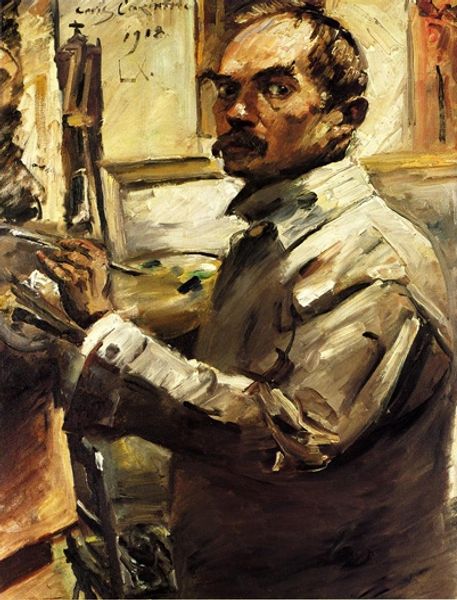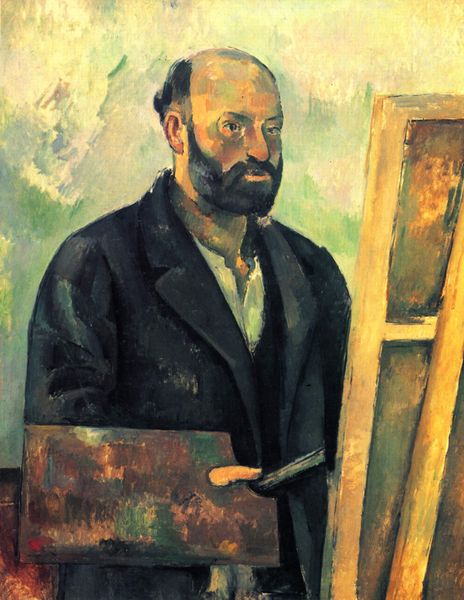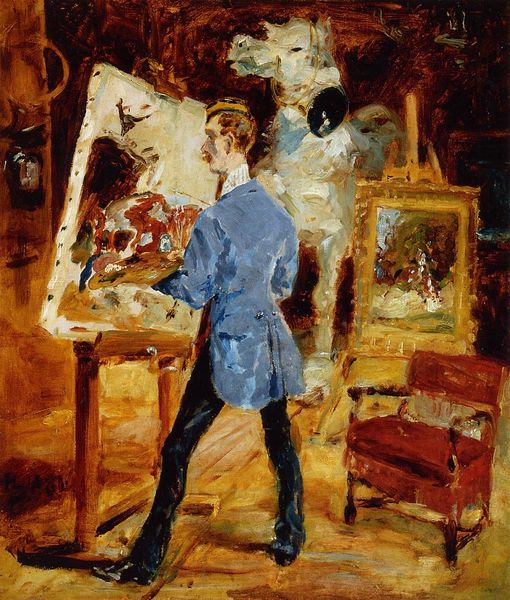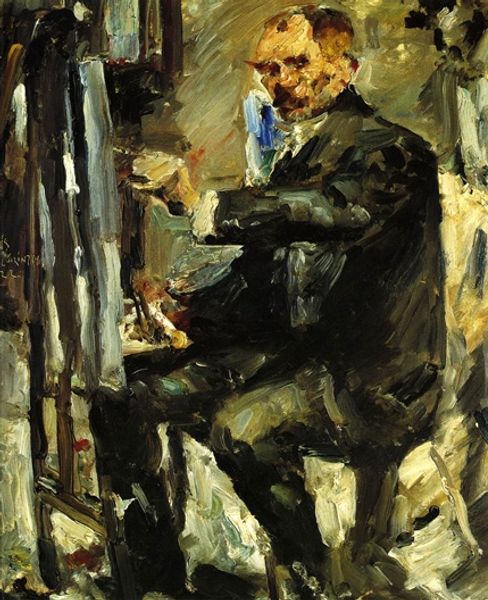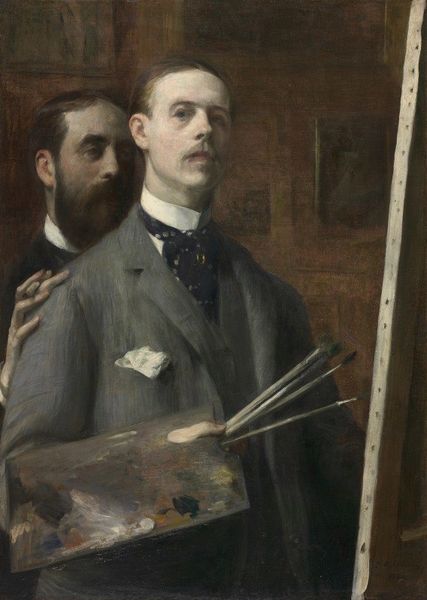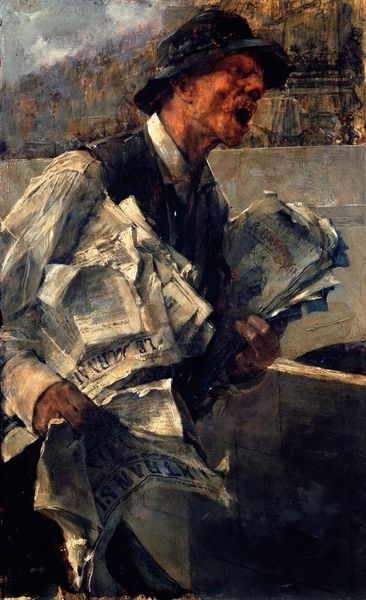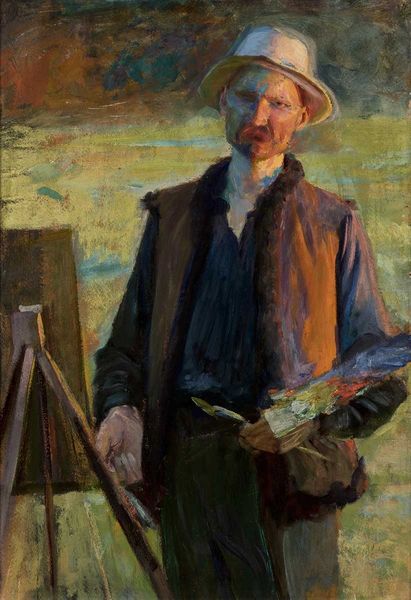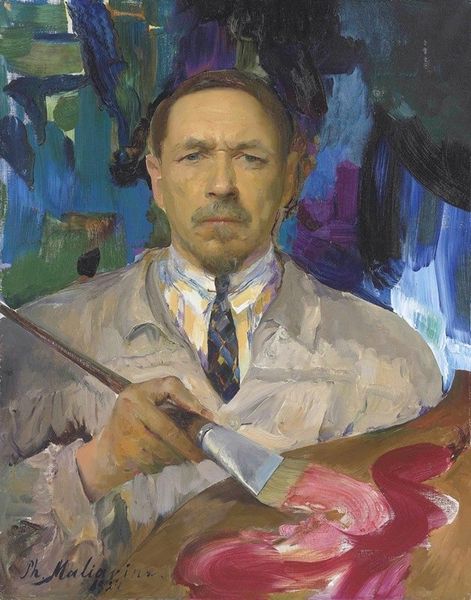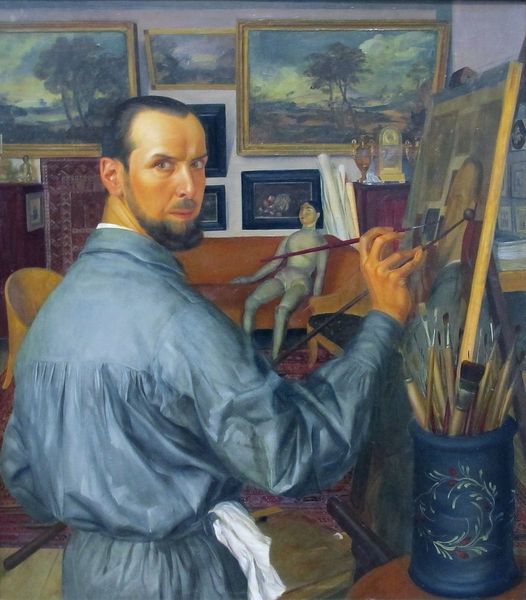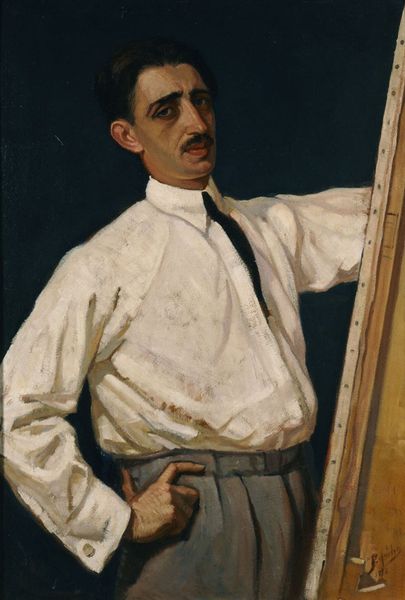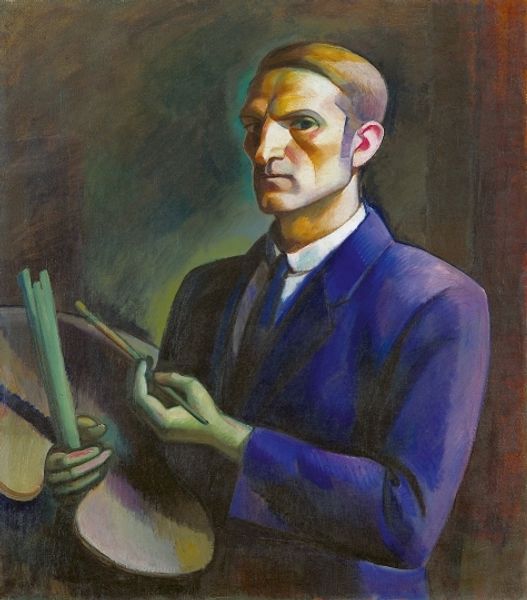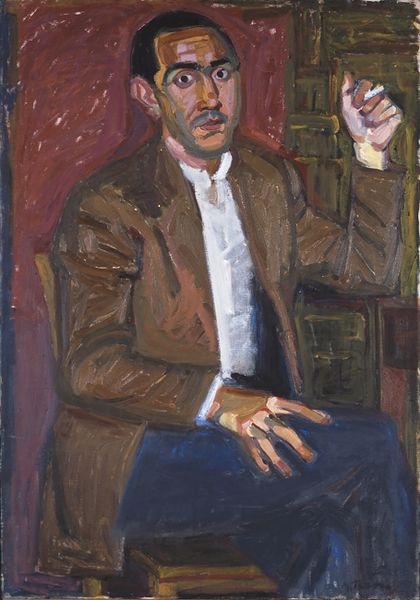
painting, oil-paint
#
portrait
#
self-portrait
#
painting
#
oil-paint
#
oil painting
#
neo expressionist
#
neo-expressionism
#
expressionism
#
portrait art
#
modernism
Copyright: Public domain
Curator: Standing before us is Lovis Corinth’s "Self-Portrait in the Studio," completed in 1914. Oil paint is layered on canvas, depicting the artist at work. Editor: It strikes me immediately as incredibly raw and honest. There's a palpable tension in his face. It feels like we are witnessing a very personal, maybe even tormented, moment. Curator: Indeed. Considering Corinth's life, 1914 was a significant year marked by illness and personal struggles. You see it in the very tactile quality of the paint itself. He applies it with an almost violent energy. Look at how the white of his smock blends, isn't it captivating? Editor: Absolutely, it underscores how labor isn't separate from the individual – especially artists. That rough, almost chaotic application reveals more than any polished surface could. What do you make of the studio context? Curator: It's a critical element! This is about the act of creation, but also the conditions of that creation. The tools, the canvases, even that skull—likely a memento mori—all become essential components of the artwork's meaning, part of the artist's existence. Editor: I'd argue it also comments on the art world’s historical construction. Corinth’s work embodies modernism's challenges to academic tradition. It reflects the artist’s position in early 20th century German society, a rapidly industrializing era of cultural anxiety. This portrait offers a perspective of how the self and identity intersect with that era’s values. Curator: Precisely, and if we view that through his tools: canvas, paints, brushes – as extensions of his body. It underscores his active engagement in translating reality into representation, thus mediating a relationship between society and material. The rough brushwork suggests a mind in turmoil, attempting to dominate a physical art process to make sense of internal pressures. Editor: So we're not just seeing an individual, but a representation of a historical moment where identity is being questioned, re-evaluated through artistic labor, gender expectations, and sociopolitical circumstances. Corinth paints his place in that tumultuous historical narrative. Curator: Beautifully put. Seeing Corinth negotiate his space gives me something to chew on when discussing expressionism. Editor: Agreed. Corinth leaves me feeling both melancholic, reflecting his context and impressed by his self examination through his craft.
Comments
No comments
Be the first to comment and join the conversation on the ultimate creative platform.
